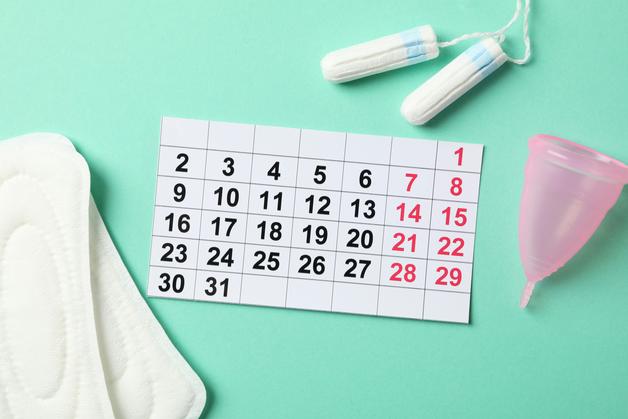The weeks and months of pregnancy are filled with anticipation—mixed with a cascade of unexpected bodily changes that can leave even the most well-prepared parents feeling unsettled. One minute you’re happily tracking kicks, the next you’re paused mid-step by a sudden, sharp twinge in your pelvis, or wondering if that relentless back ache at bedtime is normal. Nearly everyone carrying a baby will encounter pregnancy aches, a phenomenon as universal as morning sickness, but often shrouded in uncertainty. Are these sensations a sign of healthy adaptation or cause for concern? What are the science-backed ways to relieve the discomfort? Let’s demystify the origins of these aches, explain the real medical mechanisms at play, and unlock practical ways to support comfort and wellbeing during each trimester.
Understanding Pregnancy Aches: Hormones, Growth, and Everyday Life
Pregnancy aches—a term encompassing everything from dull lower back pain and abdominal twinges to throbbing feet after a long day—trace their roots to the profound transformation happening inside your body. Why so many new sensations? The answer starts with hormones. Progestogen and relaxin surge early in pregnancy, their mission simple yet monumental: soften and loosen connective tissues, paving the way for a pelvis that can accommodate birth. The side effect? Ligaments, tendons, and joints lose some stability, so strain, soreness, and fatigue become more likely.
But hormones don’t work alone. As the uterus expands and inches upward each week, the body’s center of gravity shifts, tugging at the lower back and core muscles (“lumbar spine” becomes a familiar medical term). What about round ligament pain—that sudden, almost electric stab in the groin? These ligaments stretch to support your growing womb, often responding to a sneeze, laugh, or quick change in position. Weight gain is another actor here. It’s essential for fetal growth, but even a moderate increase puts extra pressure on the lower limbs, feet, and pelvic floor, leaving many to notice muscle soreness and joint aches in places never before uncomfortable.
Sleep quality shifts, often for the worse, amplifying fatigue and magnifying every ache. And let’s not forget nutrition—magnesium and calcium have supporting roles, their deficiencies fueling cramps or restless legs, particularly at night.
Are these just “normal” pregnancy aches? For the vast majority, yes: mild to moderate discomfort that ebbs and flows with rest, activity, or simply the time of day. Yet, knowing when pain signals a more serious issue is equally important. Sudden, intense, or persistent pain—especially with other symptoms—should prompt a call to your medical provider.
Where Do Pregnancy Aches Strike? Mapping Discomfort from Head to Toe
Back and Pelvis: The Anchors Under Strain
Ask most expectant mothers about pregnancy aches and lower back pain is likely the first complaint. The reason is anatomical: as the uterus swells, ligaments and muscles tense and stretch to compensate. The result? Soreness across the lumbar region, and sometimes radiating into the pelvic girdle or along the sciatic nerve, delivering pain down the leg. These aches may spike late in the day, or after standing and walking.
Yet, it doesn’t end there. Instability in the pelvis can trigger aching hips, while symphysis pubis dysfunction—caused by movement at the joint uniting the pubic bones—leads to sharp groin or inner thigh pain.
Abdomen: Stretch, Shift, and the Mystery of Round Ligaments
Pregnancy brings a unique set of abdominal sensations. The uterus pulls and grows, stretching muscles and ligaments. Round ligament pain surfaces as brief but sudden stabs, especially noticeable when shifting position or rising quickly. Gentle cramps in early pregnancy reflect normal changes, yet it can be alarming for those unprepared. If accompanied by bleeding or severe intensity, immediate evaluation is warranted.
Unpredictable, sporadic contractions in the second and third trimester—known as Braxton Hicks—can also introduce a new dimension of tightness or discomfort, though typically without sustained pain.
Legs and Feet: Carrying the Weight
The farther along you are, the more likely pregnancy aches will settle in the lower body. Night cramps erupt in the calves or feet, sometimes linked to electrolyte shifts or simple fatigue. Swelling, a result of increased fluid retention and vascular changes, adds more discomfort. Always monitor for asymmetrical, severe swelling with redness or warmth, as it may signal a deep vein thrombosis (blood clot).
Upper Body, Head, and Hands: Unexpected Zones
Neck and shoulder aches creep in as posture adapts to a shifting center of gravity. Wrists may tingle, especially at night, as fluid compresses the median nerve—a hallmark of carpal tunnel syndrome of pregnancy. Migraines or persistent headaches, meanwhile, often reflect hormonal ups and downs. Pay attention to headaches that come with vision changes or high blood pressure—these are red flags for preeclampsia.
Chest and Breasts: Changing Topography
As the uterus encroaches on the diaphragm, rib and chest aches may emerge. Increased sensitivity and fullness in the breasts, especially prominent in the first trimester, come courtesy of hormonal surges.
Why Do Pregnancy Aches Vary by Trimester?
First trimester: Subtle, often described as fatigue, mild cramping, and breast tenderness. These early pregnancy aches reflect hormonally driven changes in the uterus and muscles.
Second trimester: Now the baby starts growing rapidly. Expect round ligament pains, a subtle increase in back aches, and even the onset of carpal tunnel syndrome. Joint pain may start to become a daily companion.
Third trimester: The finish line—yet also the period of most pronounced discomforts. Back pain, intense pelvic soreness, recurrent leg cramps, swelling, and powerful Braxton Hicks contractions all make an appearance. Sleep can become elusive. Should new symptoms appear regularly, or if anything feels “off,” prompt discussion with your doctor is always the safest choice.
When Is It Time to Contact a Medical Professional?
Here comes the million-dollar question. Most pregnancy aches are harmless and temporary, but certain symptoms need urgent attention. Watch for:
- Sudden, intense, or ongoing pain that doesn’t ease with rest.
- Discomfort coupled with vaginal bleeding or persistent contractions.
- Swelling, redness, or warmth in a single limb.
- Fever, chills, or any indication of infection.
- New-onset numbness, muscle weakness, or tingling that persists.
- Severe headaches, changes in vision, or puffiness of the face.
- Chest pain or trouble breathing.
- Burning or blood during urination.
- Vomiting—especially if frequent or associated with dehydration.
- Marked reduction or absence of fetal movements.
When in doubt, reaching out for reassurance helps protect both parent and baby.
Easing Pregnancy Aches: Safe, Science-Based Strategies for Relief
What calms those relentless pregnancy aches? Medical expertise points towards a combination approach:
- Regular rest intertwined with gentle movement is key—too much bedrest saps muscle tone, while excessive activity exhausts already stressed joints.
- Stretching routines (morning and night) foster flexibility and boost circulation. Not a fan of yoga? Even a few mindful movements—ankle rotations, slow side bends—can work wonders.
- Prenatal yoga, aquatic exercise, or walking allow the body to adapt and release tension without undue strain.
- Alternating warm compresses (not hot) and cool packs alleviate local pain. Take care: heat should never be placed over the abdomen.
- Prenatal massage, when given by a licensed provider, brings focused relief for muscle tightness and stress.
- Curious about support belts or ergonomic aids? Shoes with arch support, firm-backed chairs, and supportive pillows help fend off lower back and pelvic aches—small investments for significant progress.
- Proper posture—think standing tall, adjusting workstations, and avoiding slouching—mitigates tension from the onset.
- Physical therapy or osteopathic intervention plays an invaluable role for persistent or severe symptoms.
- For pain management, acetaminophen (paracetamol) is considered the safest option but always check with your doctor before any medication. Avoid nonsteroidal anti-inflammatories unless specifically directed.
- Nutrition and hydration matter. Foods rich in calcium and magnesium (low-fat dairy, nuts, leafy greens, whole grains) guard against muscle cramps. Prioritize at least 1.5 liters of water daily.
- Building pelvic strength through Kegel exercises not only supports aching backs but contributes to postpartum recovery.
- Finally, techniques such as mindful breathing and deep relaxation help regulate stress levels—sometimes the best antidote for chronic muscle tension.
Everyday Habits and Prevention: Shaping a More Comfortable Pregnancy
Prevention isn’t a promise—pregnancy aches can emerge even with the most diligent routines—but thoughtful strategies can reduce their impact:
- Have posture become second nature. Proper ergonomics, occasional repositioning, and careful lifting routines distribute physical demands and shield vulnerable areas.
- Engage in gentle, regular activity to stave off stiffness, improve mood, and enhance circulation. Sedentary routines tend to backfire, amplifying soreness.
- Optimize your sleep sanctuary: comfortable positions, strategic cushioning, and minimized nighttime disruptions will pay dividends in day-to-day energy (and patience).
- Keep a simple symptom diary—tracking patterns empowers meaningful conversations with your care provider.
- Emotional health deserves equal attention. Ongoing discomfort, sleeplessness, or constant fatigue can spark frustration or sadness. Leaning on partners, friends, or professionals for support transforms challenges into manageable steps.
- Most of all, listen closely to your body’s messages: pause at the first sign of excessive fatigue or pain, and never feel compelled to “push through” persistent aches.
Emotional, Social, and Daily Life Impact: Beyond the Physical
The reach of pregnancy aches isn’t only physical. Persistent soreness can sap energy, disturb sleep, and overshadow moments of joy. Emotional shifts—irritability, anxiety, or even sadness—can arise in response to constant discomfort. While these feelings are common, they warrant attention: physical therapy, group counseling, or a caring conversation offer restorative benefits well beyond the muscles and joints.
Every parent deserves an approach that adapts not only to their body, but to their daily reality—work schedules, household duties, family dynamics, personal coping preferences. Open dialogue with your medical team empowers you to advocate for comfort, safety, and emotional wellbeing.
What Happens After Delivery? Recovery and Ongoing Care
Take heart—most pregnancy aches begin to subside within weeks to months after birth. As hormonal levels gradually normalize and muscle tone rebuilds, back, pelvic, and joint pain often lessen considerably within three to six months postpartum. Gentle, progressive exercise and, where recommended, physical therapy provide additional reassurance and support for full recovery. If pain lingers beyond this period, especially when accompanied by concerning symptoms (neurological changes, persistent fever, heavy bleeding, or mood fluctuations), a medical assessment is wise.
Key Takeaways
- Pregnancy aches are a normal, frequently encountered aspect of parenthood, driven by intricate hormonal, anatomical, and emotional changes that prepare the body for new life.
- Hormones such as progestogen and relaxin loosen ligaments, while changing posture and weight strain muscles and joints; the result: a constellation of aches from the back and pelvis to the legs, feet, and beyond.
- Most aches are benign, easing with thoughtful self-care: gentle movement, posture optimization, supportive gear, physical therapy, and balanced nutrition.
- Severe or persistent symptoms, especially when paired with fever, neurological changes, swelling in one limb, or vision disturbances, must trigger a prompt consultation with a medical professional.
- Emotional support is indispensable—persistent aches affect not only the body but mood, sleep, and daily enjoyment. Leverage the encouragement of those around you and don’t hesitate to seek specialized support.
- For tailored advice and convenient health tracking, discover the Heloa app, offering personalized guidance and free child health questionnaires—a valuable companion for all parents on this remarkable journey.
Questions Parents Ask
Can pregnancy aches feel like flu symptoms or full-body aches?
Yes, during early pregnancy, some parents notice aches and fatigue that can feel similar to having the flu. It’s not unusual to feel achy all over, especially in the first weeks as your body adapts to important hormonal changes. This sensation may include widespread muscle soreness or a general feeling of being unwell. Although these symptoms are often temporary, always listen to your body—if aches are accompanied by fever or other concerning signs, it’s important to check in with your health professional for reassurance.
Are aches in the lower belly or stomach normal during pregnancy?
Aches in the lower abdomen or stomach are often part of the natural changes happening during pregnancy. Many parents experience mild cramping or twinges, particularly in the early weeks and again toward the third trimester, as the uterus grows and ligaments stretch. These sensations, although sometimes surprising, are typically a sign that tissues are adapting to support your baby. If you notice ongoing or intense pain—especially if accompanied by unusual symptoms—it is recommended to seek advice from your medical provider for peace of mind.
At what stage in pregnancy do aches usually become more noticeable?
Aches can appear at any time, but many parents find them most noticeable in the third trimester as the baby grows larger. The extra weight and shifting posture place new demands on your muscles, back, and joints. Even before this, you might observe cramping or discomfort as early as one to two weeks after conception. The intensity and location of aches may shift throughout the journey—every parent’s experience is unique. If anything feels unusual or overwhelming, you can always reach out to your care team for compassionate support.

Further reading:







